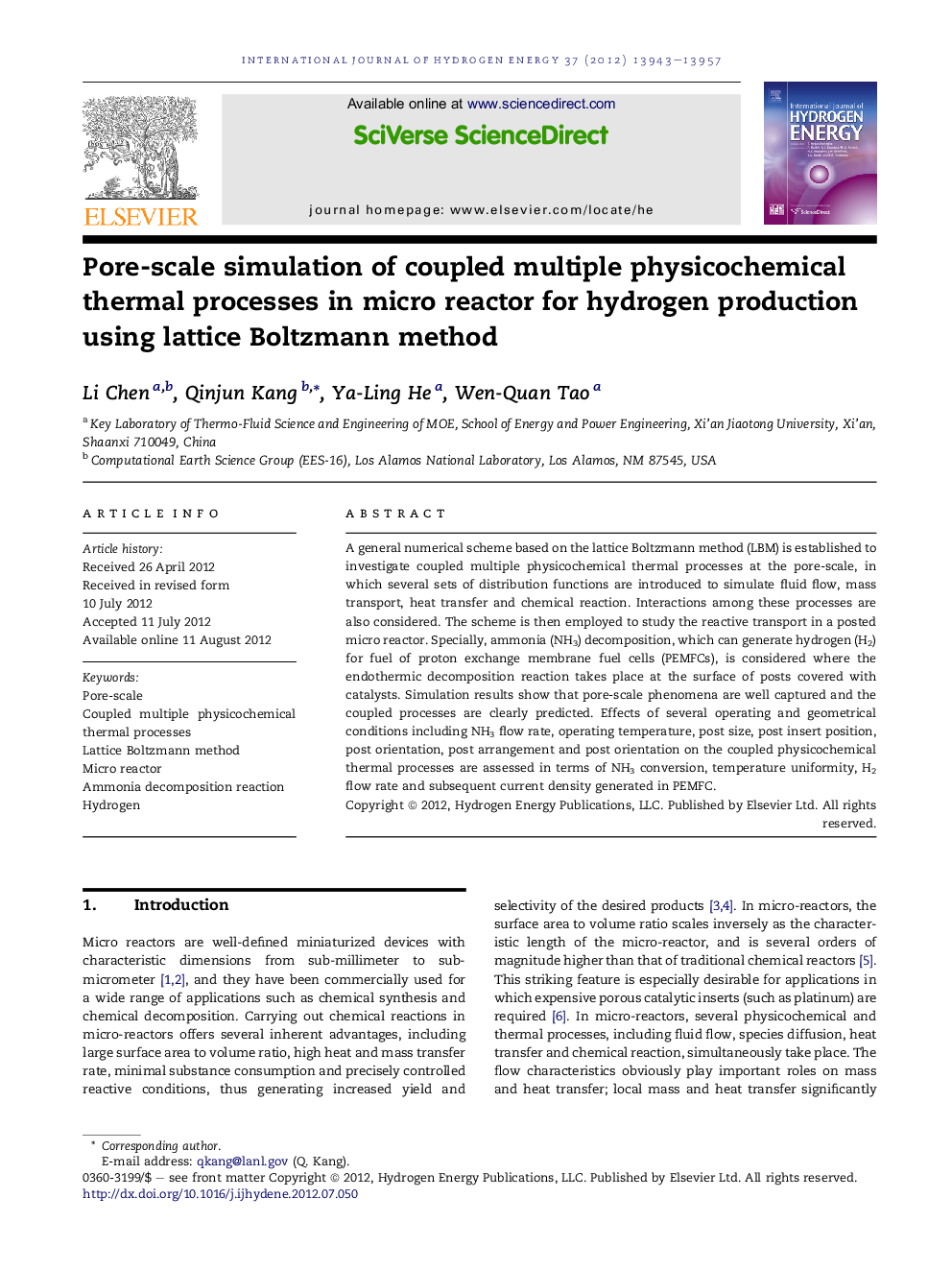| Article ID | Journal | Published Year | Pages | File Type |
|---|---|---|---|---|
| 1274737 | International Journal of Hydrogen Energy | 2012 | 15 Pages |
A general numerical scheme based on the lattice Boltzmann method (LBM) is established to investigate coupled multiple physicochemical thermal processes at the pore-scale, in which several sets of distribution functions are introduced to simulate fluid flow, mass transport, heat transfer and chemical reaction. Interactions among these processes are also considered. The scheme is then employed to study the reactive transport in a posted micro reactor. Specially, ammonia (NH3) decomposition, which can generate hydrogen (H2) for fuel of proton exchange membrane fuel cells (PEMFCs), is considered where the endothermic decomposition reaction takes place at the surface of posts covered with catalysts. Simulation results show that pore-scale phenomena are well captured and the coupled processes are clearly predicted. Effects of several operating and geometrical conditions including NH3 flow rate, operating temperature, post size, post insert position, post orientation, post arrangement and post orientation on the coupled physicochemical thermal processes are assessed in terms of NH3 conversion, temperature uniformity, H2 flow rate and subsequent current density generated in PEMFC.
► A general numerical scheme based on the lattice Boltzmann method (LBM) is established. ► It is used to investigate coupled multiple physicochemical thermal processes at the pore-scale. ► Interactions among fluid flow, mass transport, heat transfer and chemical reaction are considered. ► Reactive transport of ammonia (NH3) decomposition in a micro reactor is simulated. ► Effects of several operating and geometrical conditions on the conversion efficiency are studied.
